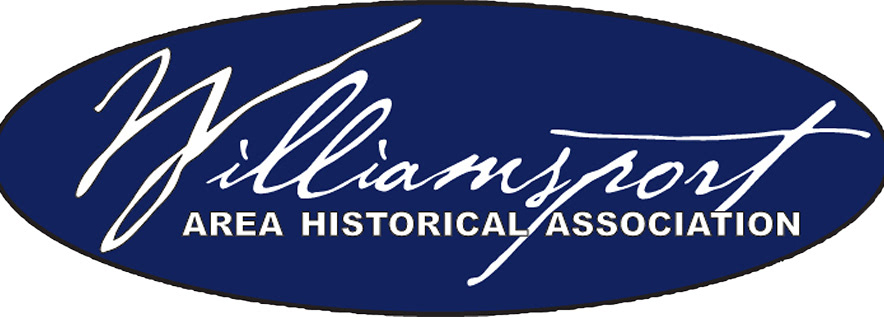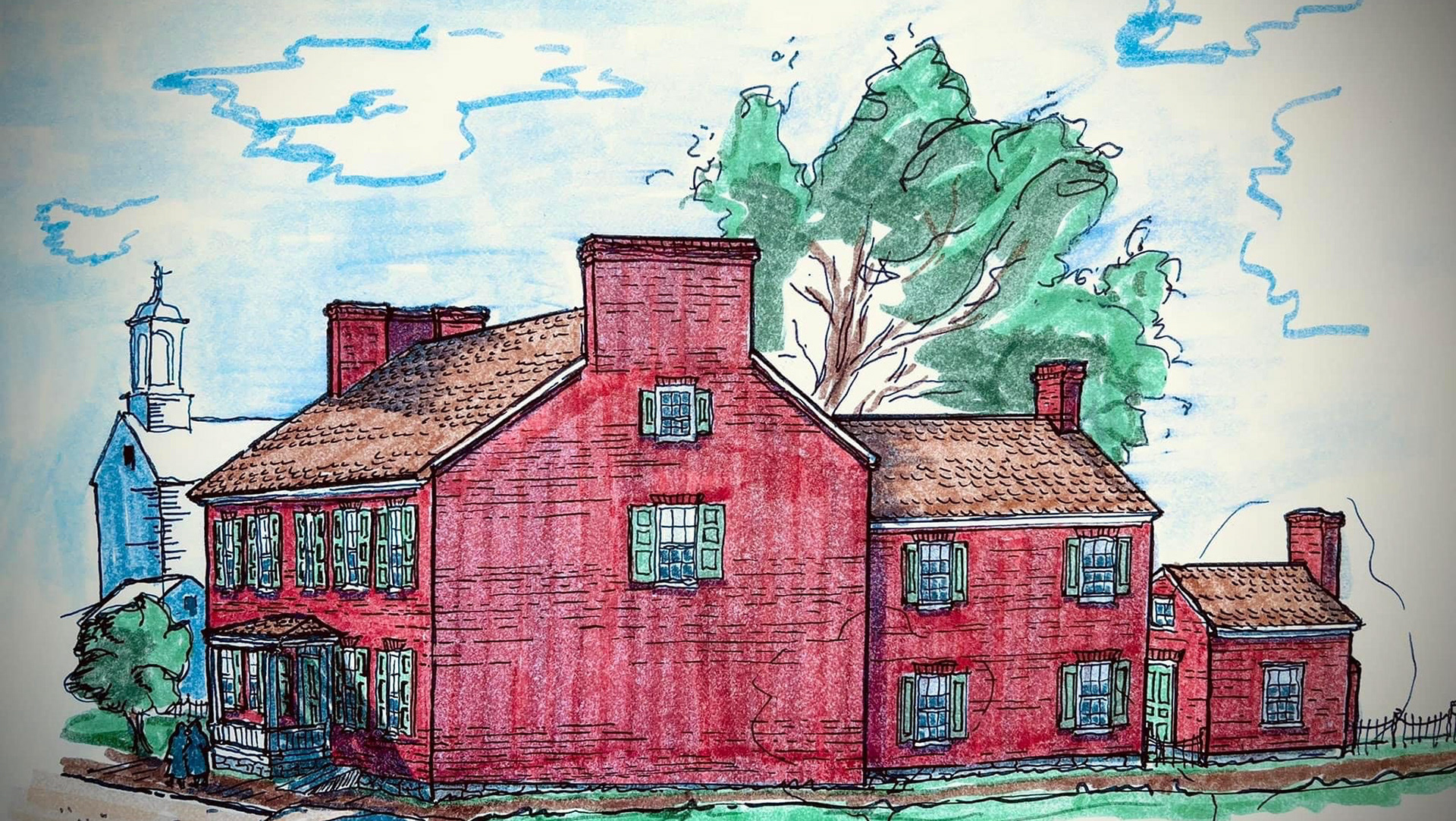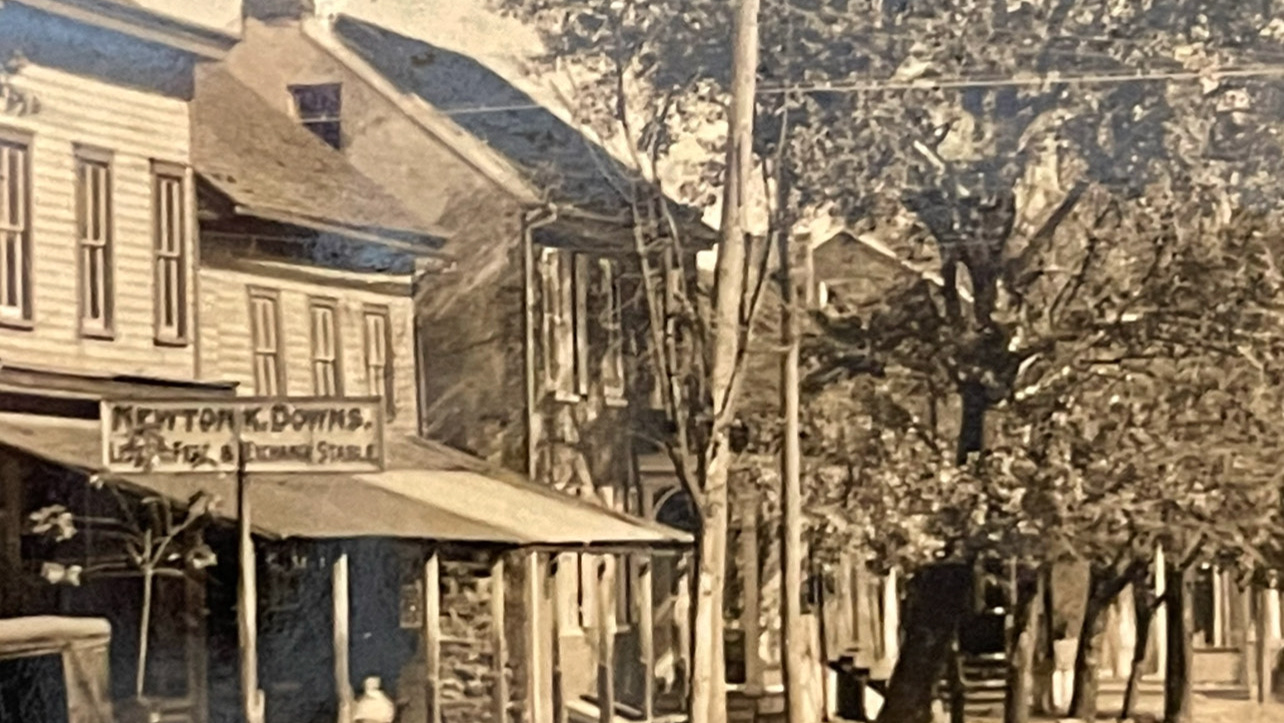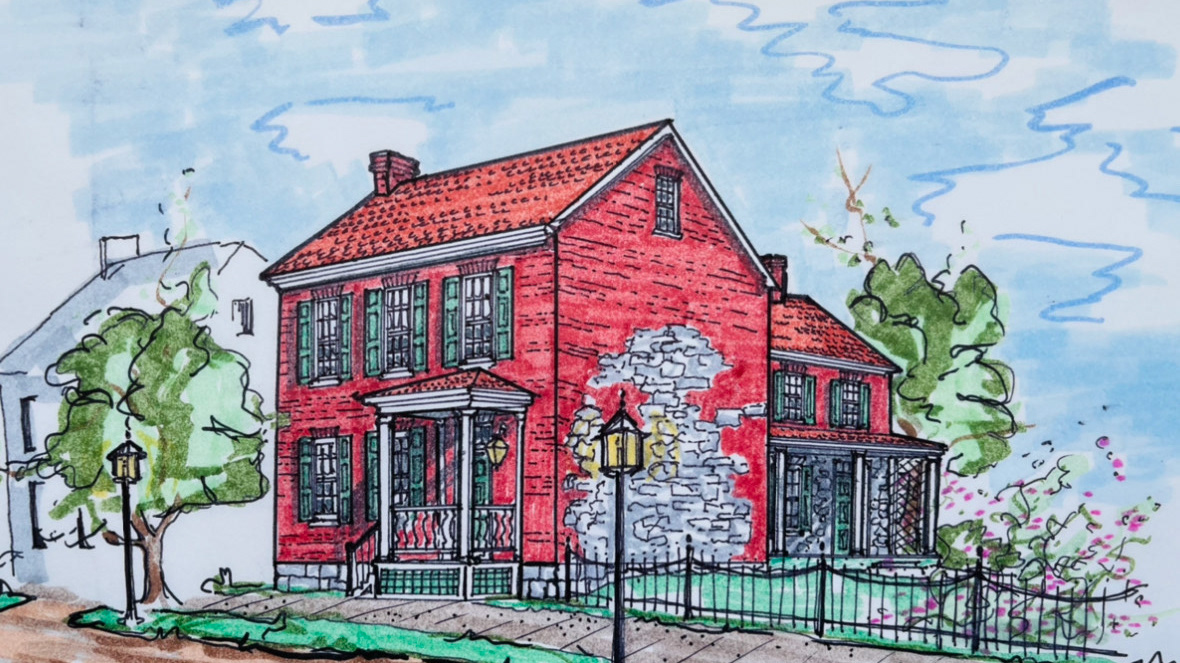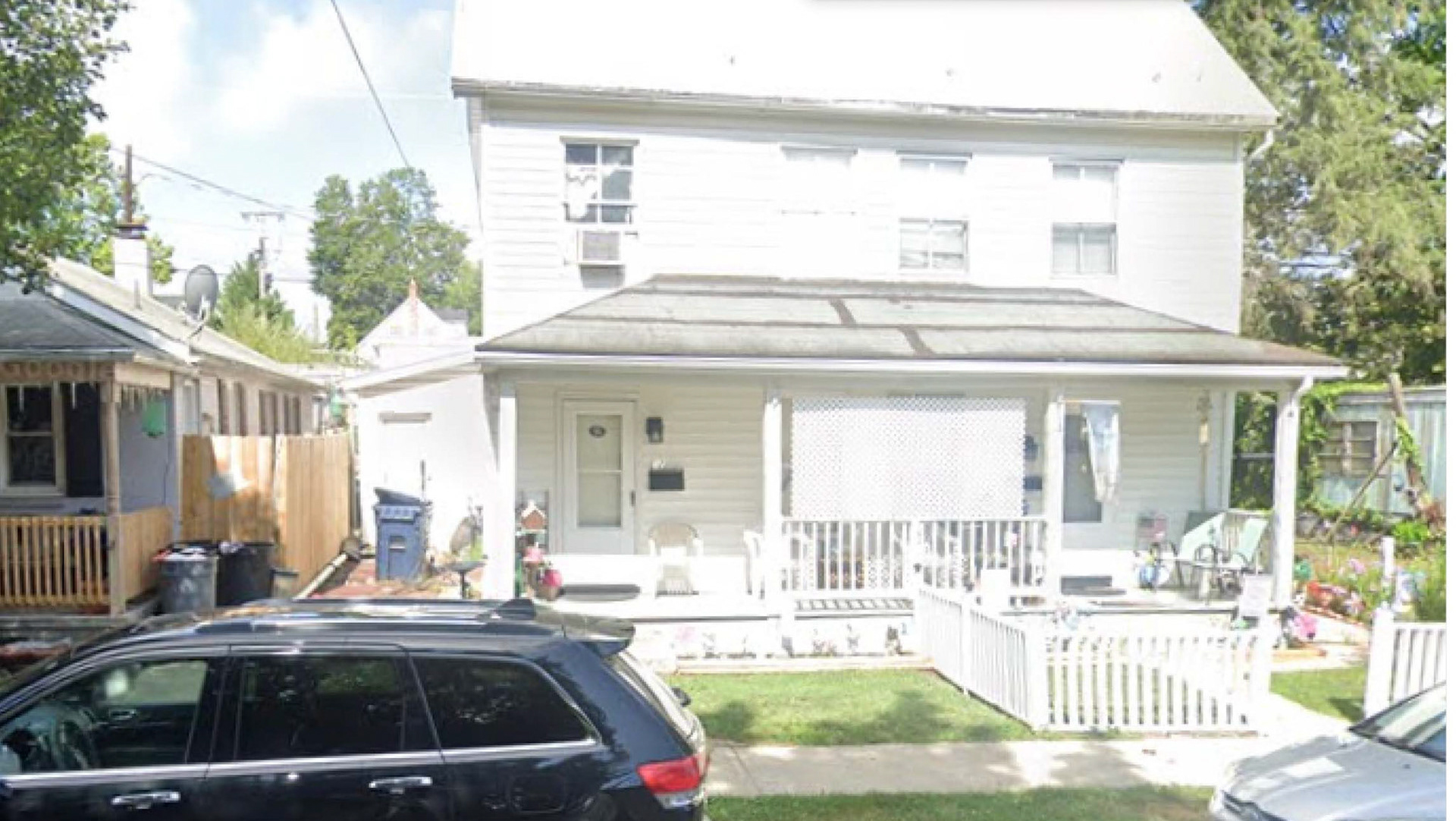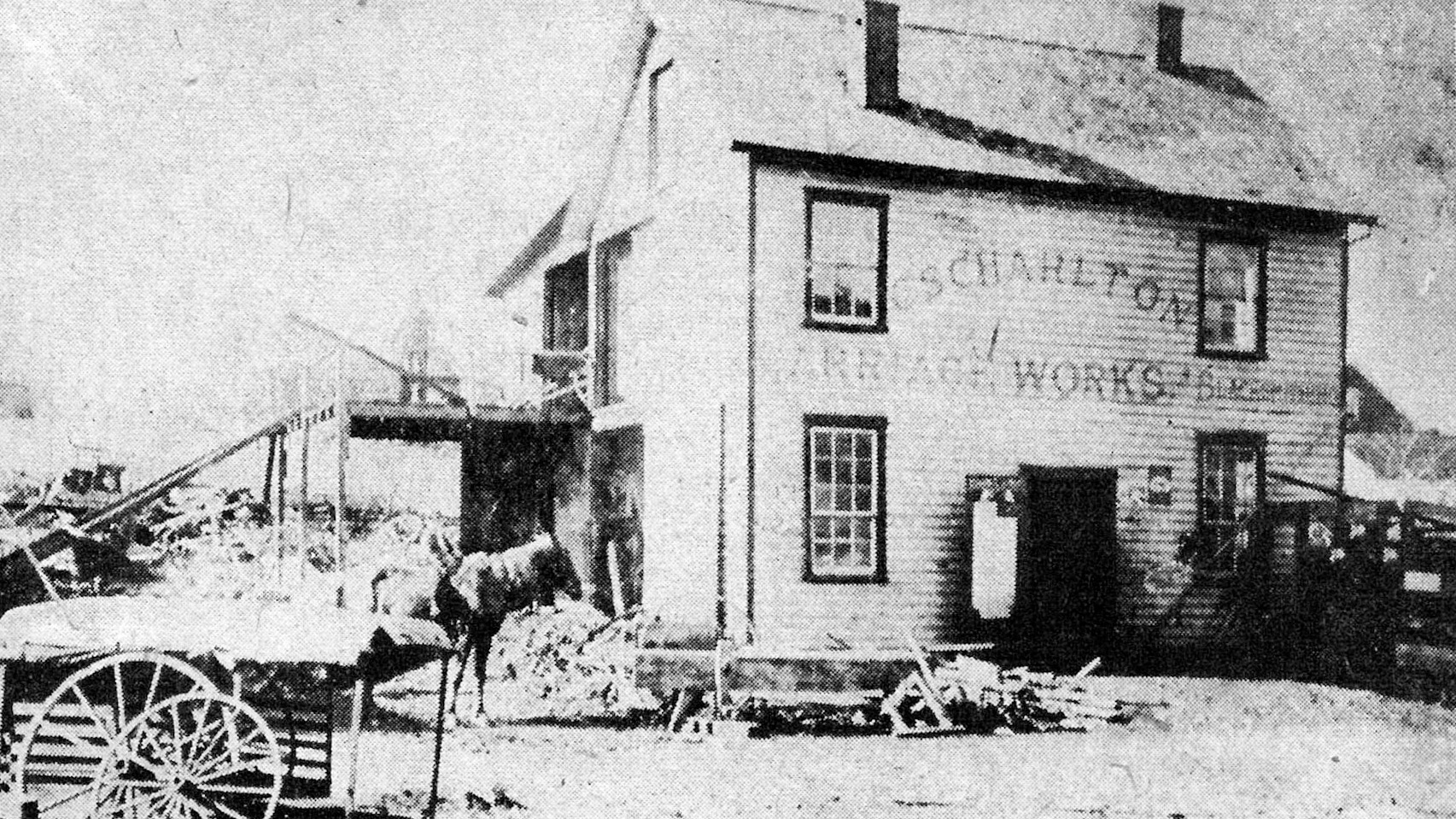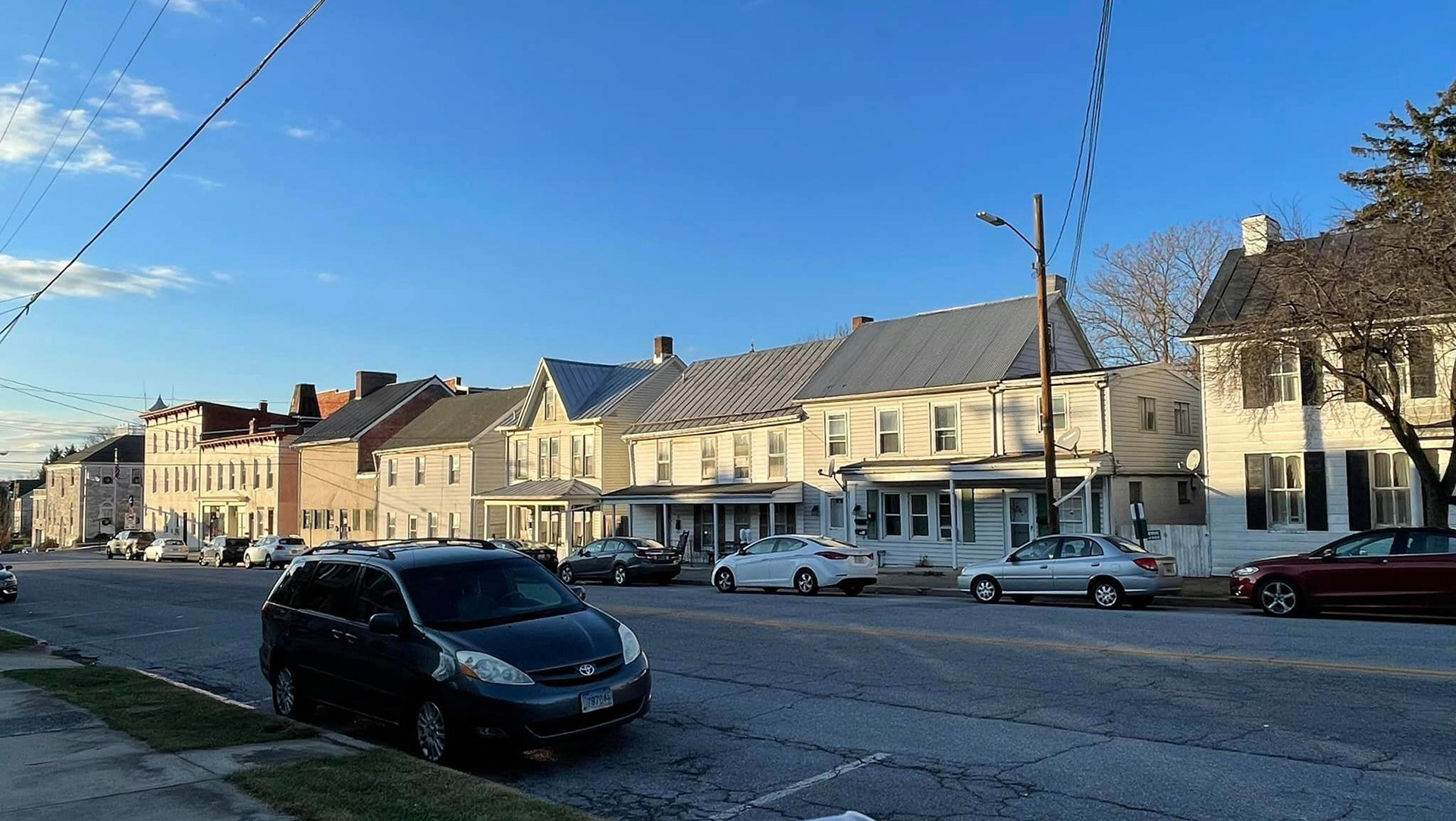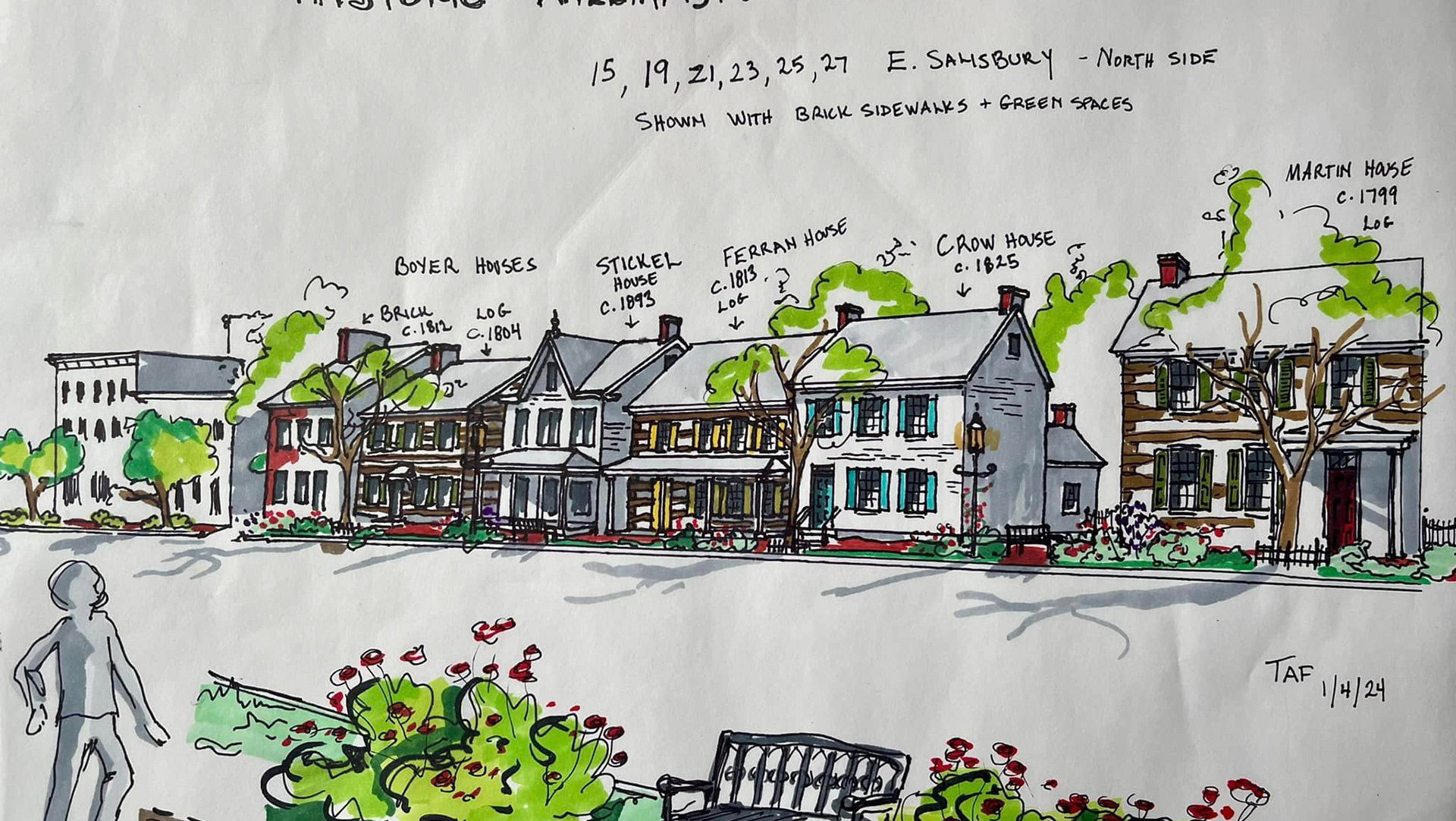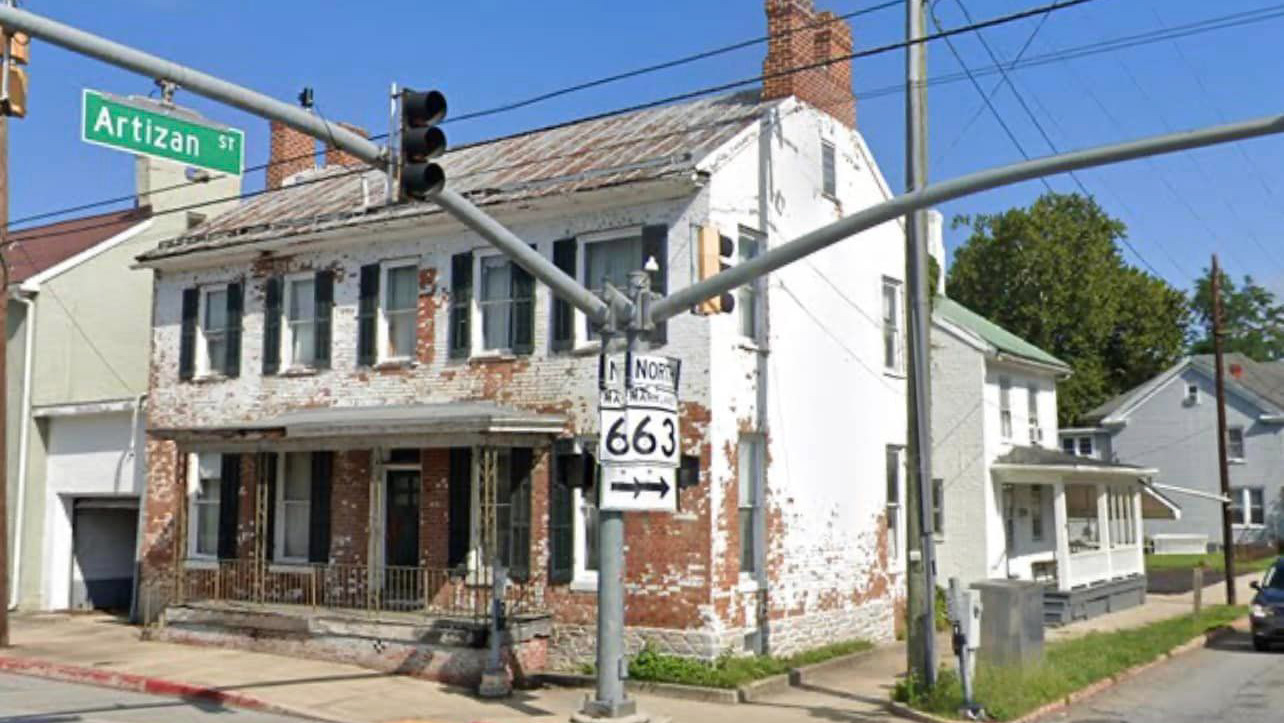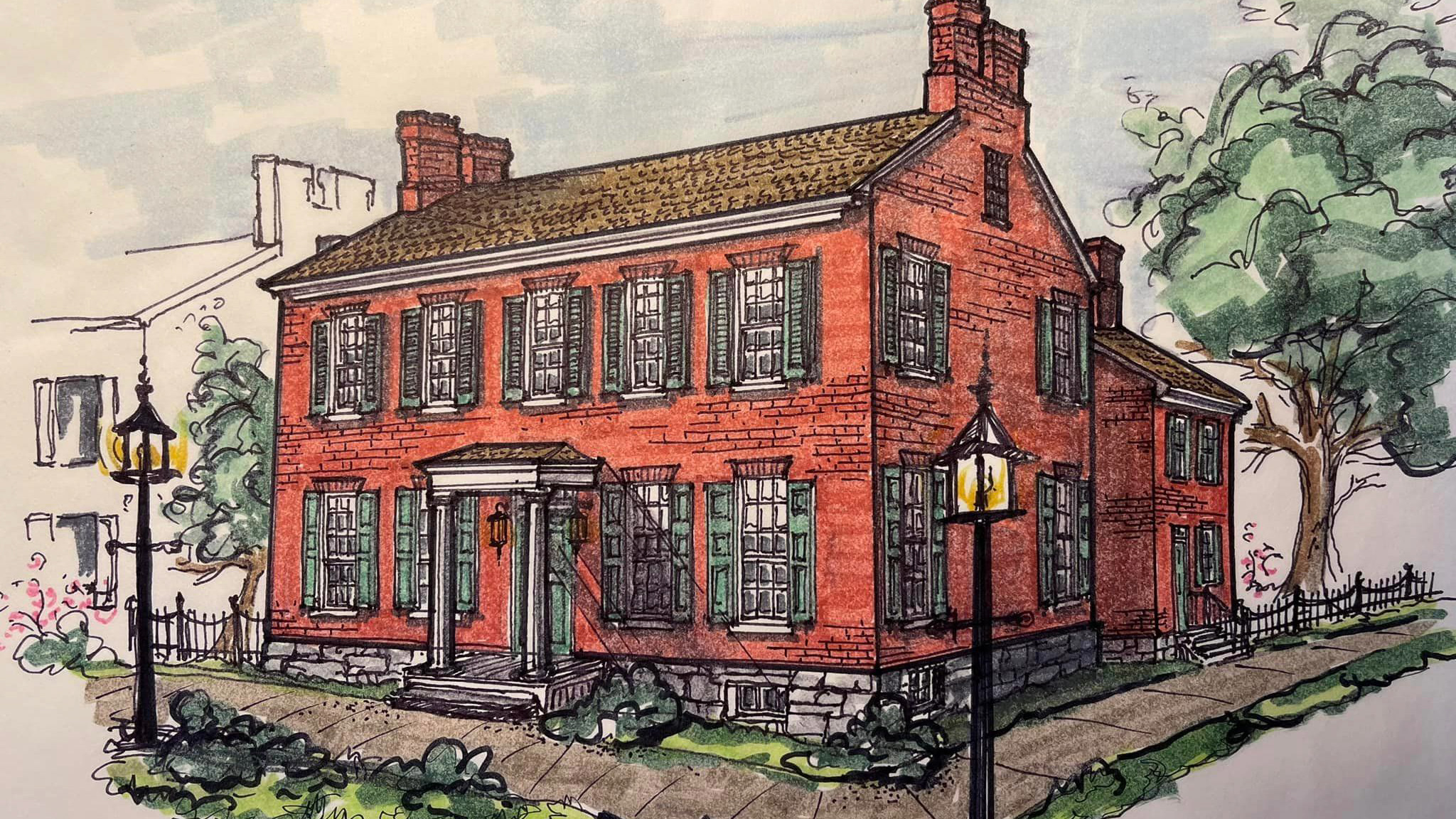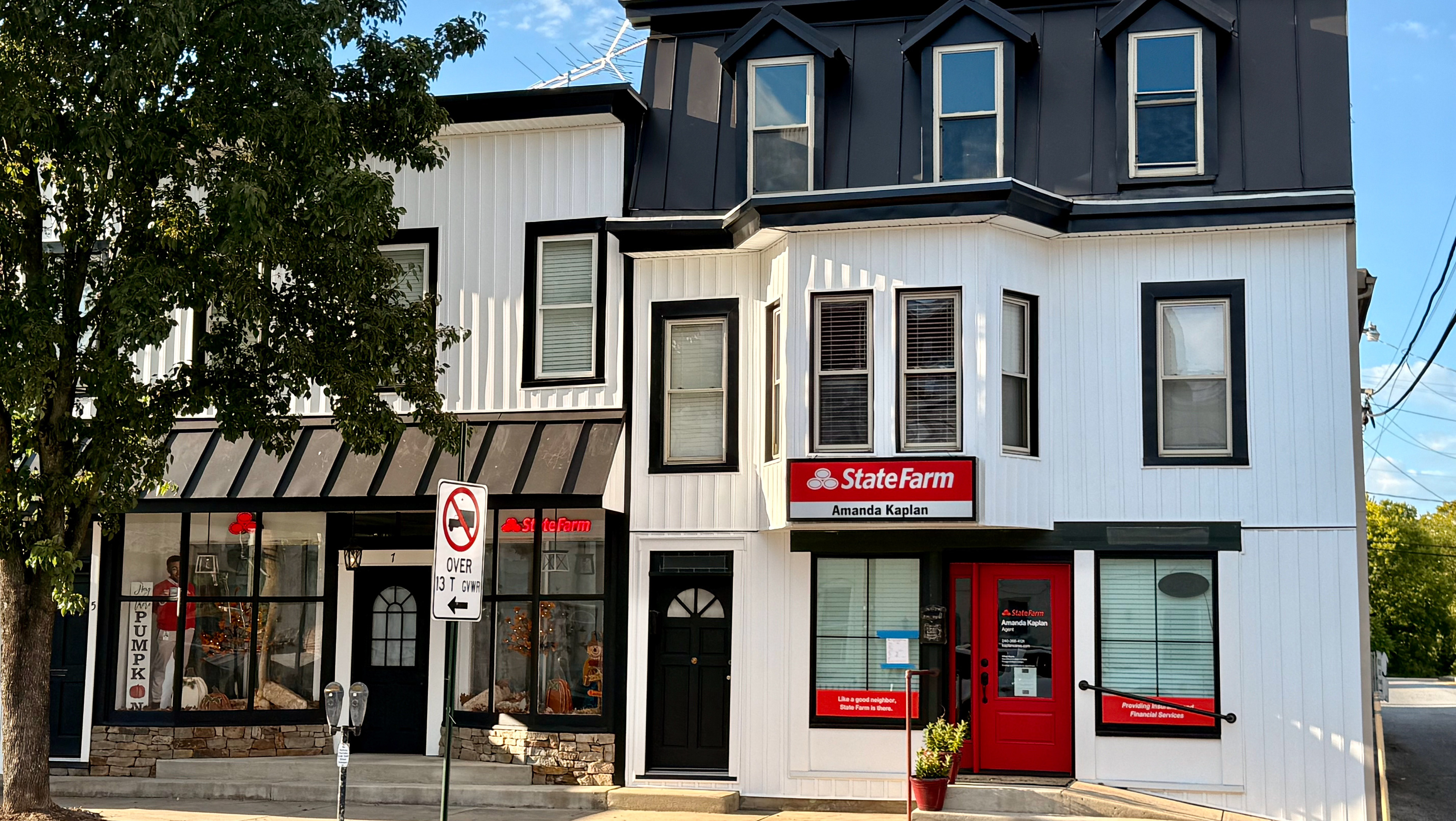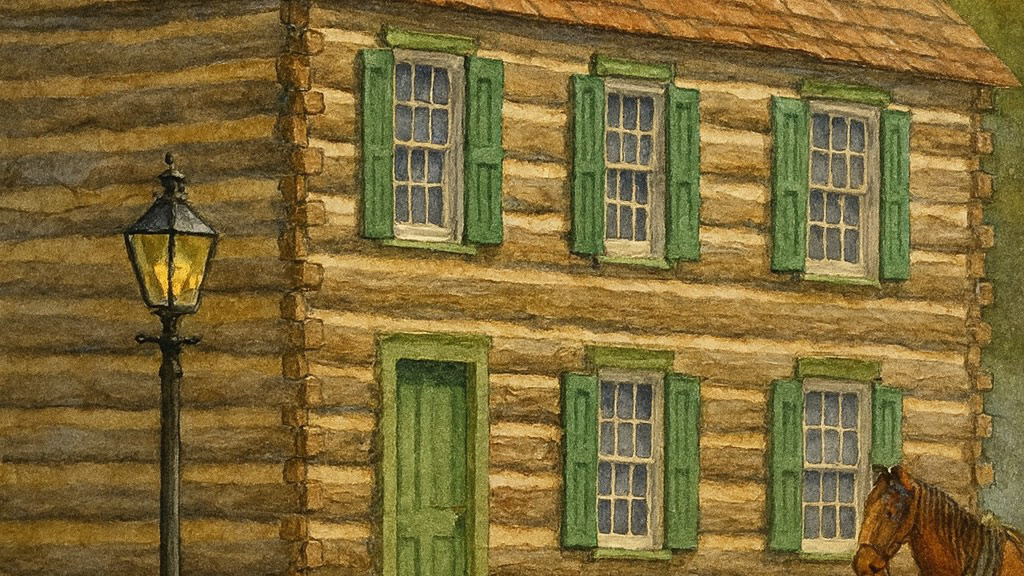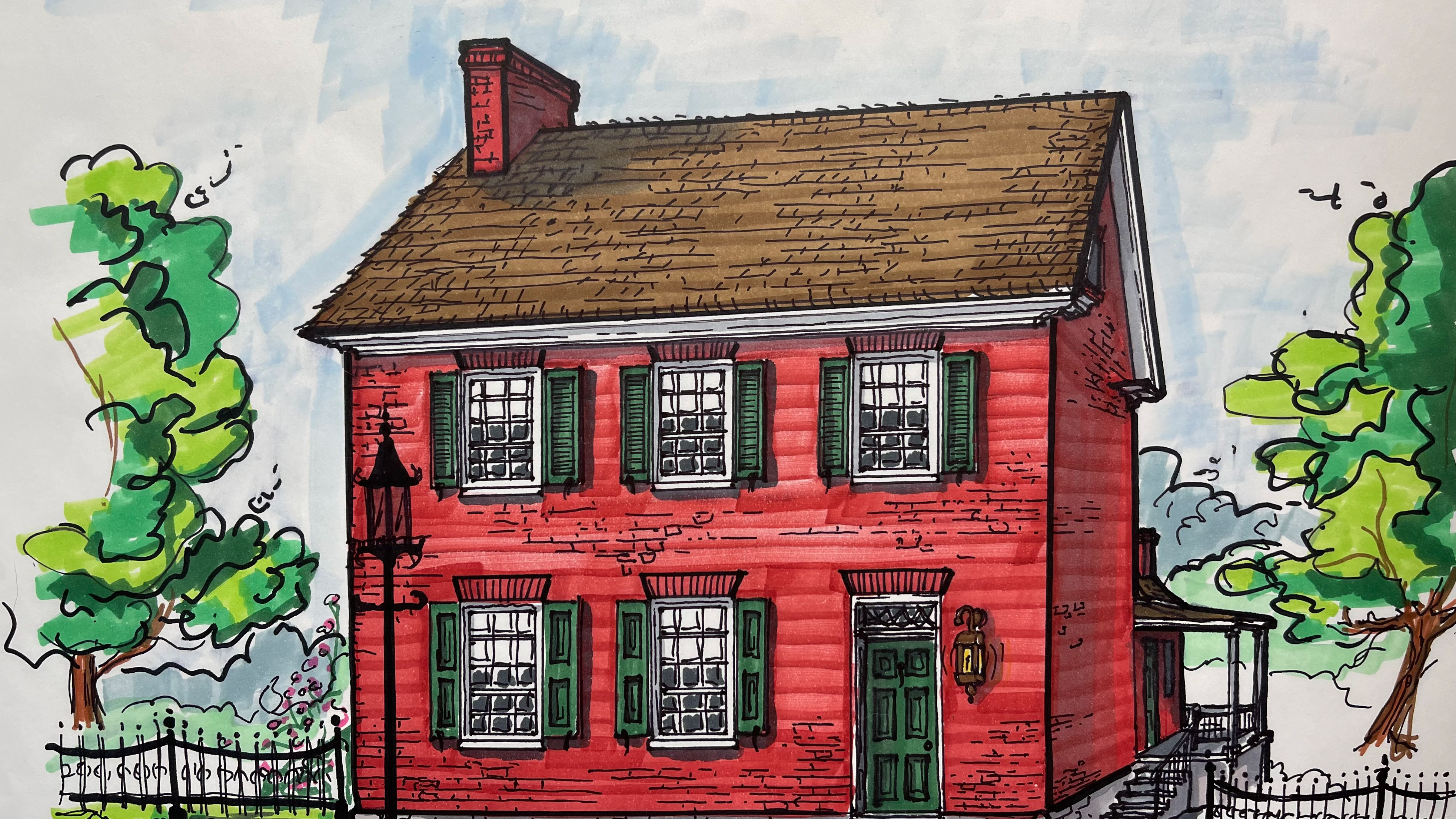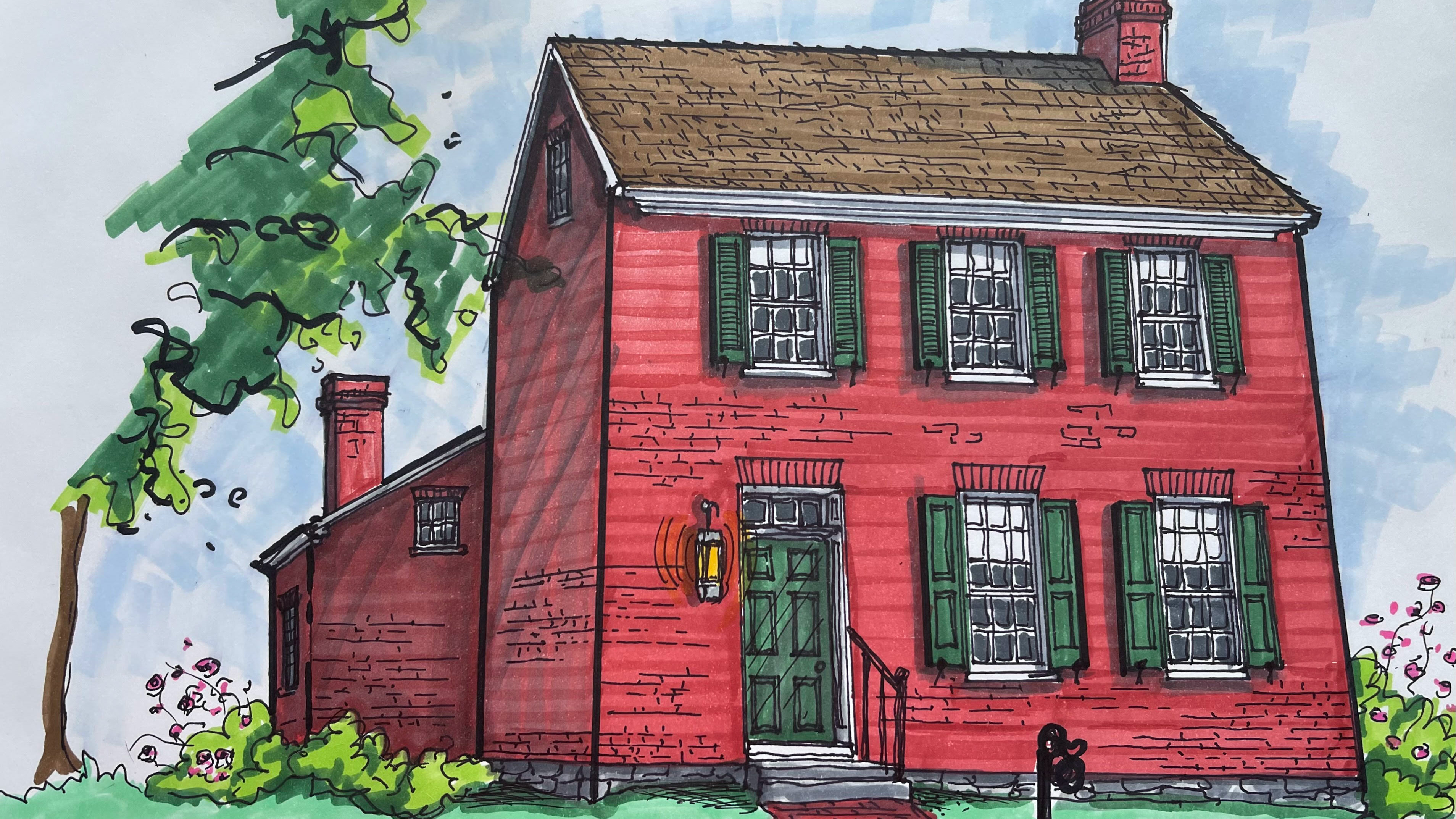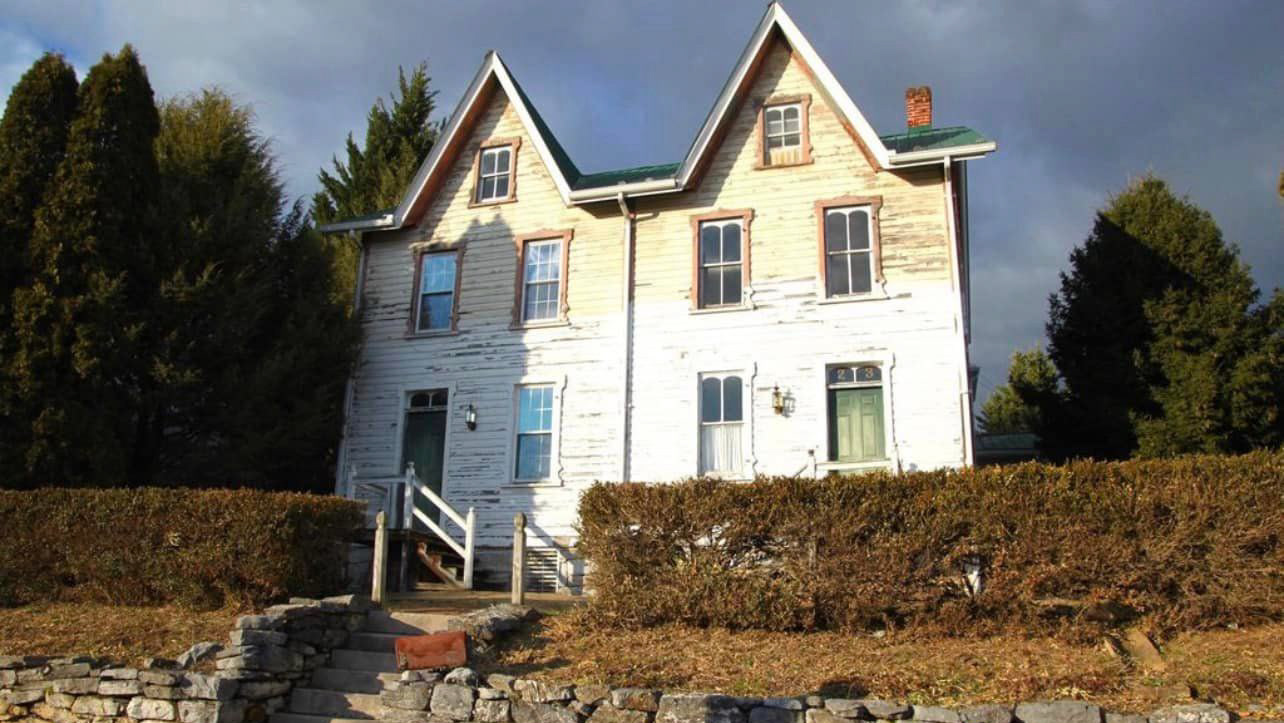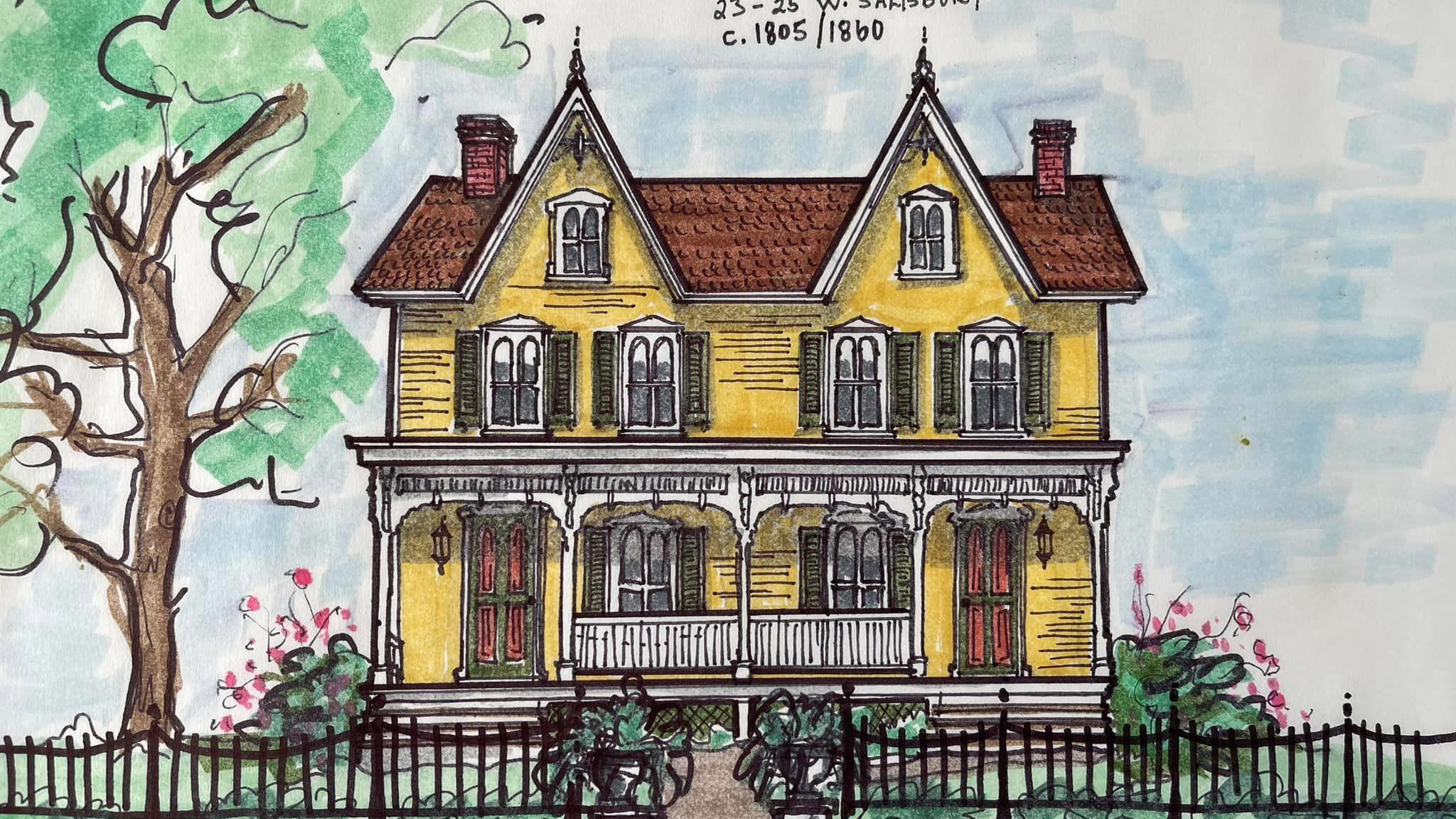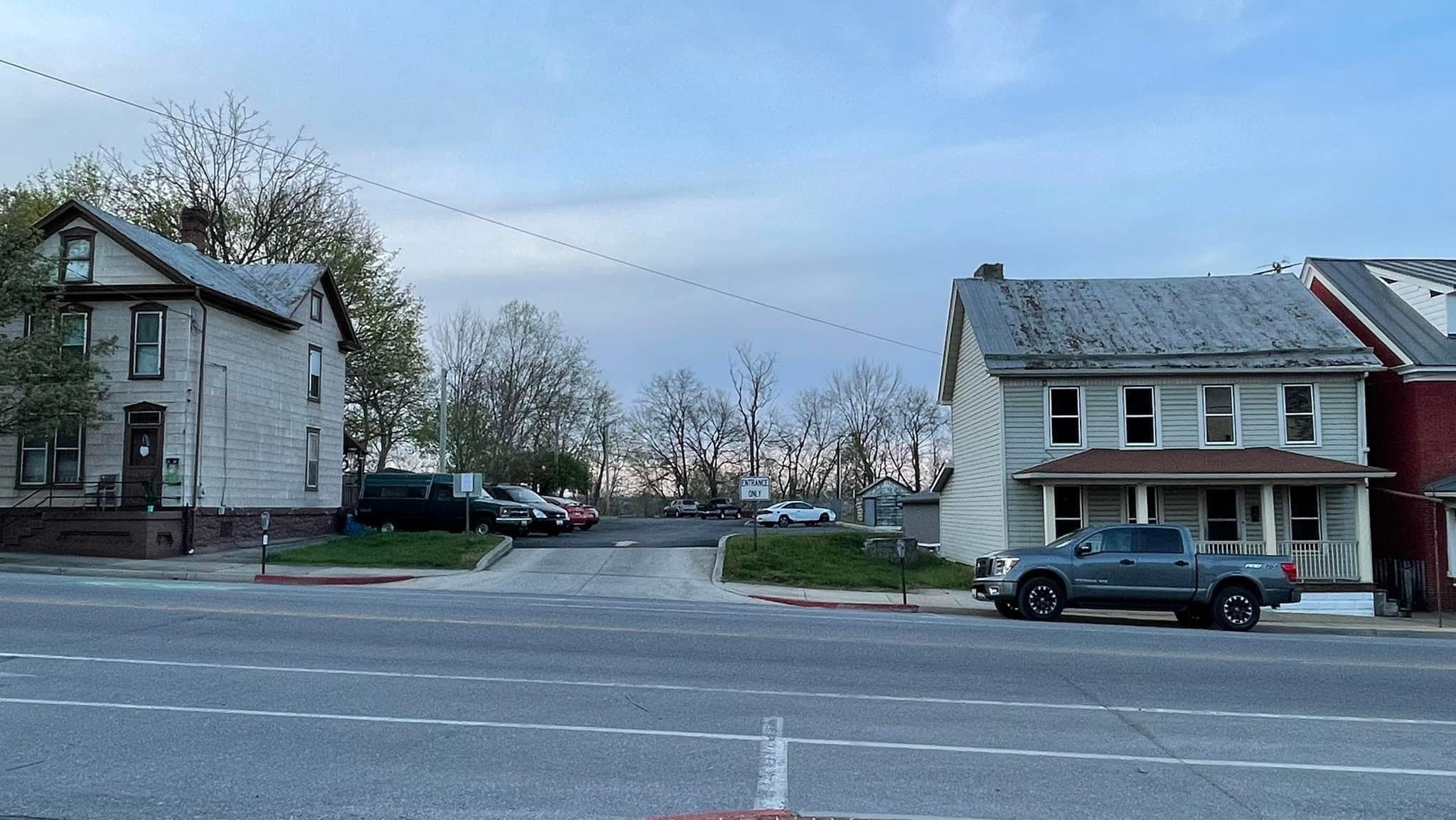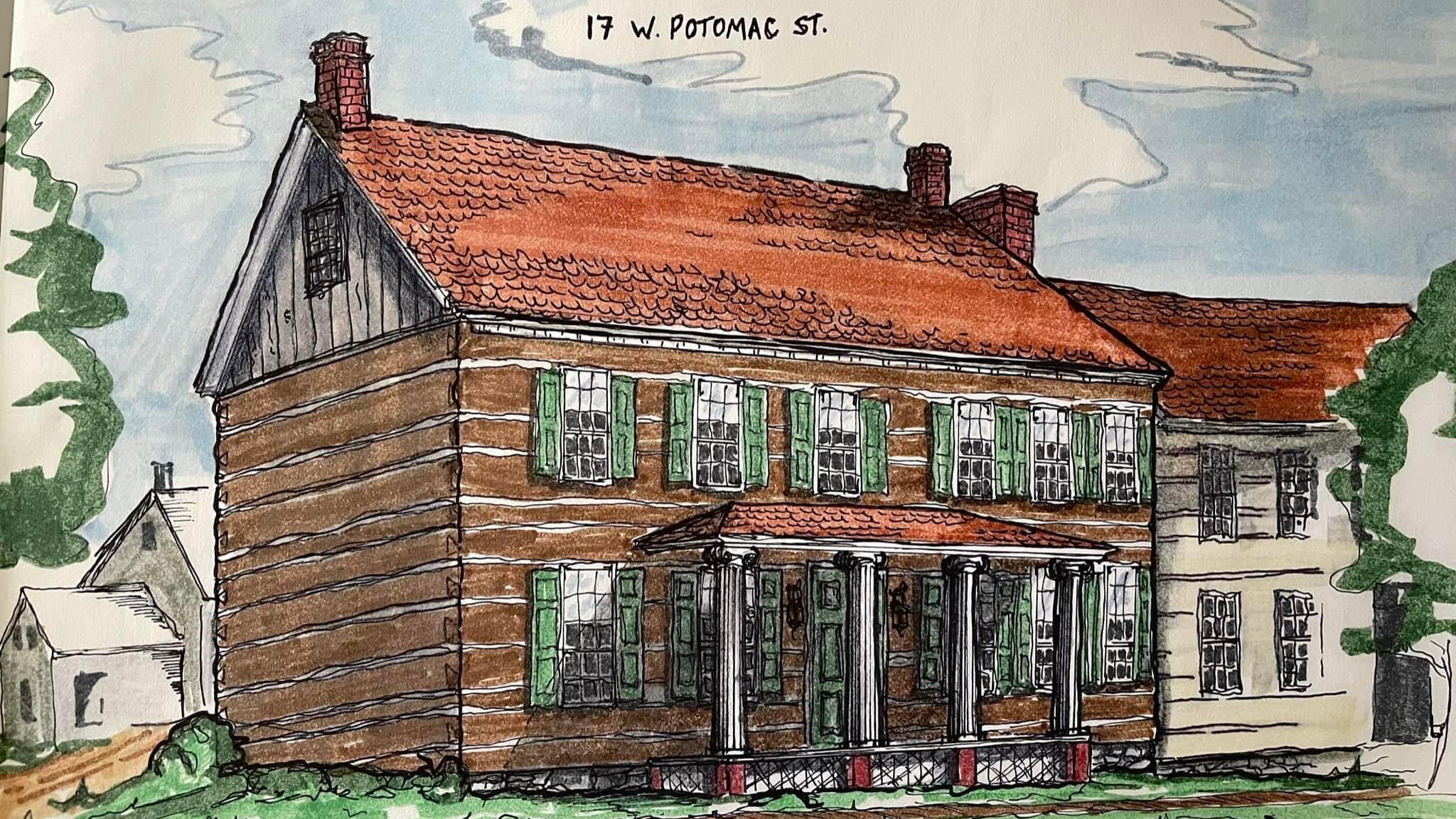For one hundred and ninety-four years, at the southwest corner of Potomac and Artizan streets once sat a massive two-and-one-half-story Federal Style brick structure on limestone foundations. The facade of the historic brick structure along East Potomac Street was originally four bays wide and three bays deep along Artizan Street. The Barnhart and Beachley Company expanded the original building in 1910 when they purchased the property to house their overall factory. The company added a 12-bay long and 3-bay deep brick addition to the southeastern corner along Artizan, and sadly demolished an 18th-century log structure abutting the western wall and further expanded the brick structure another six bays, more than tripling the size of the building. Although needing restoration, Williamsport lost a significant historical landmark when Sheetz demolished the massive historic structure in 2014.
Samuel Ross leased lots 33 and 34 at the corner of East Potomac and Artizan in the newly formed town of Williamsport from Otho Holland Williams in 1790. Being a family member of the famed General, Otho gave Samuel nine years vs. the standard three most people were allowed to build a house and enclose the lot. Samuel fulfilled his terms with pizazz as he sold the lots to Abraham Hebling in 1797 (recorded in 1802) for the astonishing sum of $800. To help put this price into perspective, most improved lots sold for less than a third of that price. It's fair to assume that Ross had built a substantial home, likely the log structure that would become the Potomac House Tavern on the western half of lot 33 along East Potomac Street. The lots probably contained other outbuildings, such as a stable, privy, smokehouse, etc., to fetch such a price. Hebling had also leased lot 32 across the alley to the west towards what is now the Catholic Church.
In a contentious court case from 1818, the property David Harvey Jr. then owned was sold due to a series of enormous debts. The three lots were sold to Jacob Weaver at Sheriff's sale in 1820 for a fraction of their worth. This sale was probably a result of the massive economic recession that the country endured. However, in 1823 Weaver sold the lots to Ellis Reese for the whopping price of $3000. Weaver must have built the massive, stylish brick residence directly abutting the Ross house at the corner of Artizan and Potomac, later to become the cornerstone of the overall factory. He also built a beautiful brick stable (which would later become the Harsh Blacksmith Shop) and expanded upon and embellished the existing structures, perhaps establishing a business on the lots.
Benjamin and Elizabeth Riegle, a real estate savvy couple from Hagerstown, purchased the three lots in 1833 from Reese for $2500 and held onto it for the next 40 years, craftily piecing off parcels for large sums in the early 1860s. Martin Van Buren Harsh and Nelson Harsh purchased a "weatherboarded house" on the western section of lot 33 next to the alley and the majority of lot 34, which had "an existing blacksmith shop" on it in 1863 and 1868, respectively. The blacksmith shop was the Weaver brick stable—deeds in the 1860s and beyond reference the two-story brick building on the corner, which is uncommon, and typically reserved for significant structures.
It seems that the Riegle Family was at least a bit unforgiving of their tenants and business partners. The agreement between the Harsh brothers was done with a "gentleman's handshake," as stated in court papers. The Riegle's didn't want to honor the agreement, and a lawsuit ensued, with the Harsh's paying for the oversight. Another scathing report of the Reigles comes from a newspaper article from 1846 by Blacksmith Issac Thompson in response to Benjamin Reigle running for office. Thompson describes how in 1845, after a severe injury to his face while working at the Blacksmith Shop he was renting along with a residence (which he was under agreement to buy) from the Reigles; he underwent major surgery in Baltimore. Upon returning home, he found a notice that he and his young family had been evicted, leaving them homeless.
The large brick residence at the corner underwent various uses during the 1860s-early 1870s. During the Civil War, the upper rooms of the brick building on the corner were used as a schoolhouse and undoubtedly housed soldiers during Williamsport's several occupations. The Harsh Family ran the Potomac House, referenced as the "Tavern House" in deeds from this time, in the old weatherboarded log house next door. These two buildings were still separate at that time, as evidenced by the deed descriptions and the 1877 map of Williamsport, although just a foot apart.
The Temperance Society (a movement that largely abstained from the use of alcohol) purchased parts of lots 33 and 34 in 1872, containing the brick house built by Jacob Weaver, while the Harsh Family had purchased the old stable behind it, in which they ran their Blacksmith Shop formerly leased by Issac Thompson. Late 19th century deeds called the building "The Templar's Hall and The Temperance Hall" and after 1899, "The Redman's Hall."
Conococheague Tribe 84, with a twist of irony, purchased the Temperance Hall in 1899 as the first headquarters for their organization after establishing their Williamsport chapter in 1886. The Red Men only owned the old building for six years before moving to the old Presbyterian Church on North Conococheague Street, where the Moose Club now resides.
In 1905 and the ensuing decades, the Barnhart and Beachley Company reunited the buildings and other sectioned-off parcels from original lots 32, 33, and 34. The Barnhart & Beachley Company bought them and expanded the Temperance Hall described above for the factory to produce their famed overalls, as shown in the 1918 Sanborn Insurance Map of Williamsport. Sadly, The Barnhart Company would have also demolished the old Harsh brick Blacksmith shop and Harsh log tavern (Potomac House) before 1918 for the expansion. In 1939 the Williamsport Hosiery Corporation, later to become the Willcraft Hoisery Mills Inc., purchased the old Overall Factory and operated in the old building until the late 1970s. The Willcraft Hosiery products were superb quality, enjoyed by some Hollywood actresses who occasionally traveled to Williamsport to purchase them.
Emerson Baron and associates purchased the aging factory in 1979 for $90,000, turning it into a furniture store and adding a white brick curtain wall to the exterior of the old building. The Red Baron store was open for many years. The march of progress came knocking at the door of the old building in 2012, much to the dismay of the townspeople. Hundreds of citizens packed the Town Hall to oppose its demolition and replacement with a gas station, but the town council voted to allow the new Sheetz and bulldoze the historic structure. In the summer of 2014, the wrecking ball struck the 194-year-old landmark structure, smashing it into rubble and briefly exposing the ancient brick vaulted basements and cooking fireplaces built in the 1790s and 1820s. Municipalities and corporations should work together to find solutions that benefit the community with the long-term goal of preserving and saving our heritage. Solutions that help both exist; they take a little elbow grease.
Williamsport still has many of its historic and beautiful structures but absolutely NONE to spare. We must continue to show our town council the importance of protecting and saving our architectural treasures. These buildings tell our stories long after we are gone and should be respected and treated with dignity—Williamsport's heritage in brick, stone, and wood matters.
